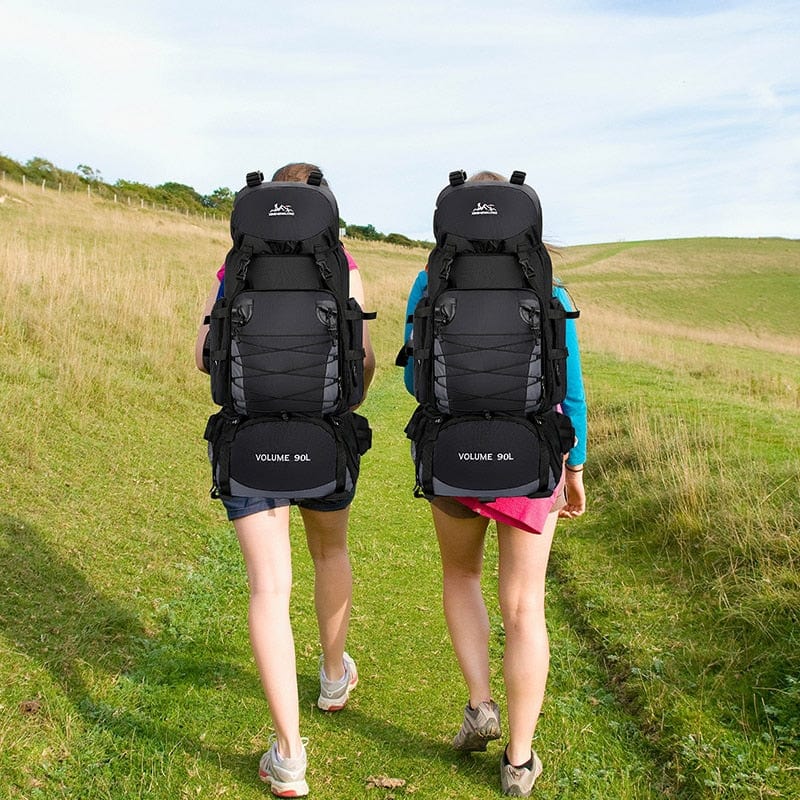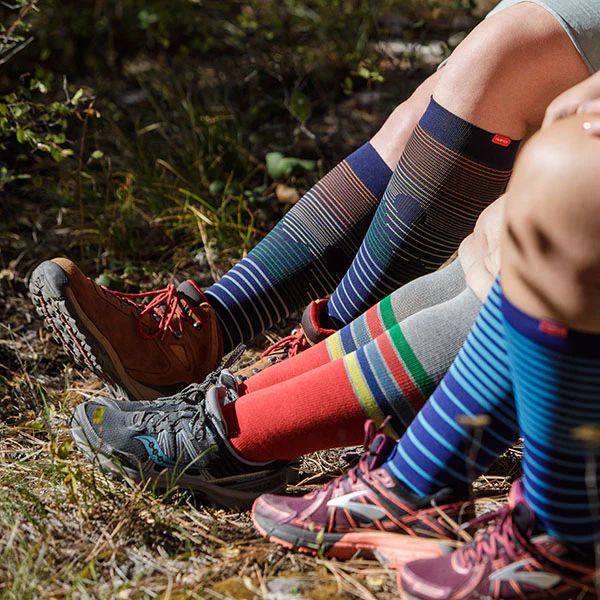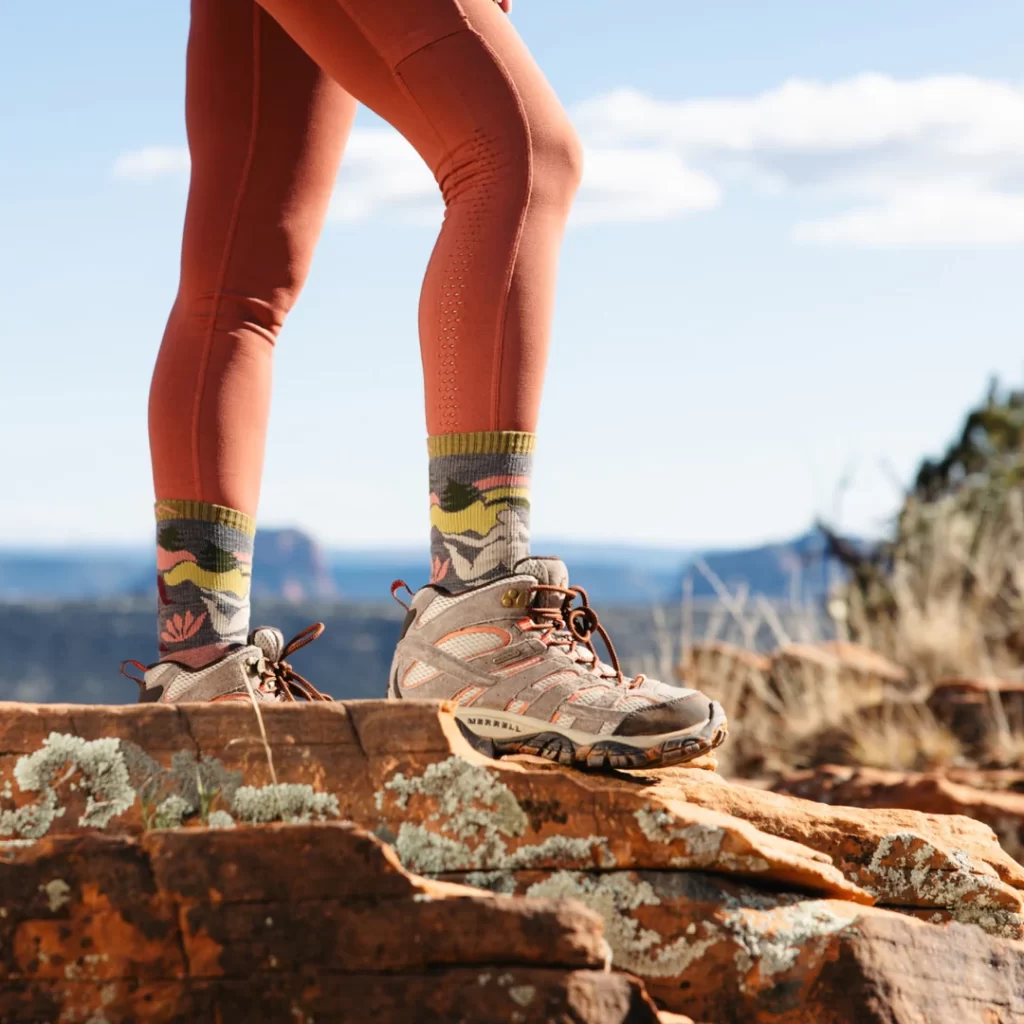I. The Intersection of Fashion and Function in Hiking

Hiking is not only about outdoor adventure and physical activity; it also embodies a distinct sense of style and individuality. Understanding the role of fashion in hiking and striking a balance between style and practicality is crucial for hikers seeking to enhance their outdoor experience.
A. Understanding the role of fashion in hiking
In recent years, hiking fashion has transcended its traditional association with solely functional or utilitarian attire. It has evolved into a realm where style, innovation, and performance intersect, enabling outdoor enthusiasts to express themselves while embracing the demands of the trail. The evolution of hiking fashion reflects a growing emphasis on personal expression, environmental consciousness.
B. Balancing style and practicality on the trails
Finding the equilibrium between style and practicality is a fundamental consideration for hikers. While functional considerations such as weather protection, durability, and comfort are paramount, expressing one’s personal style and embracing fashionable hiking attire contributes to a more enriching and enjoyable outdoor experience. Balancing style and practicality on the trails empowers hikers to navigate environmental challenges.
II. Essential Hiking Apparel and Accessories
Selecting the right hiking apparel and accessories is integral to the hiking experience, encompassing performance-oriented clothing, proper footwear, and a range of accessories tailored to outdoor pursuits.
A. Performance clothing for comfort and protection
Performance-oriented clothing is designed to provide comfort, protection, and mobility while accommodating the dynamic requirements of hiking terrain and weather conditions. Essential hiking apparel such as moisture-wicking base layers, breathable outer shells, and versatile convertible pants are engineered to enhance comfort and promote freedom of movement, fostering an optimal outdoor experience.
B. The significance of proper footwear
Proper footwear is a cornerstone of hiking apparel, facilitating stability, support, and traction on various surfaces. High-quality hiking boots or trail shoes play a pivotal role in safeguarding foot health, with features such as waterproofing, durable outsoles, and ankle support contributing to overall comfort and protection during outdoor excursions.
C. The role of accessories in hiking fashion
Accessories play an integral role in hiking fashion, offering practical utility and style enhancement. From functional accessories such as moisture-wicking socks, sun protection hats, and technical backpacks to fashion-forward elements like scarves, sunglasses, and versatile headwear, accessories contribute to both performance and aesthetic aspects of hiking attire.
Hiking fashion continues to evolve, embracing innovative designs, advanced materials. And sustainability-driven practices to cater to the diverse needs and preferences of outdoor enthusiasts. Embracing fashion and function in hiking provides hikers with a platform to express their outdoor ethos, personalize their gear choices.
III. Trendy and Functional Hiking Outfit Ideas

Hiking outfit ideas are not only about practicality; they also encompass style, sustainability, and individual expression. Embracing trendy and functional hiking attire allows outdoor enthusiasts to combine fashion sensibilities with the demands of the trail.
A. Stylish layering for variable weather
Stylish layering is a fundamental aspect of trendy and functional hiking outfit ideas, offering versatility and adaptability in response to variable weather conditions. Hikers can cater to changing temperatures and environmental factors while maintaining a fashionable and practical appearance.
B. Embracing sustainable and eco-friendly hiking fashion
Eco-friendly and sustainable hiking fashion reflects a growing emphasis on ethical consumption and environmental responsibility within the outdoor industry. Embracing sustainable fabric choices, ethically sourced materials, and durable, long-lasting designs. It aligns with the principles of sustainability and contributes to reducing the ecological footprint of hiking attire.
C. Incorporating urban-inspired trends into hiking attire
Incorporating urban-inspired trends into hiking attire fosters a fusion of style and performance, allowing hikers to infuse their outdoor wardrobe with contemporary fashion influences. Urban-inspired elements such as athleisure wear, sleek silhouettes, and minimalist designs introduce a modern aesthetic into hiking fashion. And it caters to the preferences of fashion-forward outdoor enthusiasts.
IV. Personalizing Your Hiking Style
Personalizing hiking style enhances the individuality and self-expression of hikers. It enables them to craft a unique and tailored appearance that aligns with their outdoor persona and fashion sensibilities.
A. Expressing individuality through color and patterns
Individuality can be expressed through the use of colors and patterns in hiking attire. It allows hikers to personalize their outdoor wardrobe through vibrant hues, bold prints, and expressive patterns that resonate with their personality and style preferences.
B. Finding the right fit for your body type
Finding the right fit in hiking attire is essential for promoting mobility, comfort, and confidence on the trail. Tailoring outdoor clothing to accommodate individual body types ensures a comfortable and flattering appearance. And it promots a positive hiking experience and unhindered movement.
C. Tailoring your hiking fashion to match your outdoor personality
Tailoring hiking fashion to match one’s outdoor personality is a key consideration for hikers seeking to align their attire with their preferred outdoor pursuits, environments, and recreational inclinations. By customizing gear choices and fashion selections to match specific outdoor activities, hikers can optimize performance and comfort while reflecting their unique outdoor ethos.
Trendy and functional hiking outfit ideas empower hikers to bridge fashion and functionality, embracing style-conscious ensembles that cater to environmental consciousness, personal expression, and individuality. As we continue to explore the evolving landscape of hiking fashion, we’ll delve into the influences of hiking fashion on outdoor culture, social media trends, and sustainable practices within the hiking attire industry. Stay tuned for the next phase of this exploration. As we uncover the significance of individual expression and fashion-forward considerations in hiking attire.
V. Hiking Fashion for Different Environments
Hiking fashion is not a one-size-fits-all concept; it requires adaptation to varying terrains, durations, and weather conditions. Understanding how to tailor attire for diverse hiking environments, elevate style for different types of treks, and make special considerations for warm and cold weather is essential for hikers seeking to traverse a range of outdoor settings.
A. Adapting attire for diverse hiking terrains
Adapting attire for diverse hiking terrains involves selecting clothing and gear that align with the unique characteristics and challenges of specific landscapes. From arid deserts to lush forests and rugged mountains, hikers must consider factors such as abrasion resistance, moisture management, and sun protection when preparing their attire for different terrains.
B. Elevating style for day hiking and overnight treks
Elevating style for day hiking and overnight treks entails striking a balance between functionality and fashion, catering to the extended duration and specific requirements of each type of hike. While lightweight, breathable attire is ideal for day hiking, overnight treks demand versatile clothing options that transition from day to night and accommodate a variety of weather conditions.
C. Special considerations for warm and cold weather hiking
Warm and cold weather hiking necessitates special considerations in attire selection to ensure comfort, performance, and safety in varying climates. Apparel for warm weather hiking should prioritize breathability and sun protection, whereas cold weather hiking requires insulation, layering. And moisture-wicking fabrics to maintain warmth and comfort in low temperatures.
Adapting hiking fashion to different environments empowers hikers to tailor their attire to suit specific terrain characteristics, trek durations, and climate conditions, enhancing both style and functionality. As we further explore the evolving landscape of hiking fashion, we’ll delve into the influences of hiking attire on outdoor culture, social media trends. And sustainable practices within the industry. Stay tuned for the next phase of this exploration, as we uncover the significance of individual expression and fashion-forward considerations in hiking attire.

